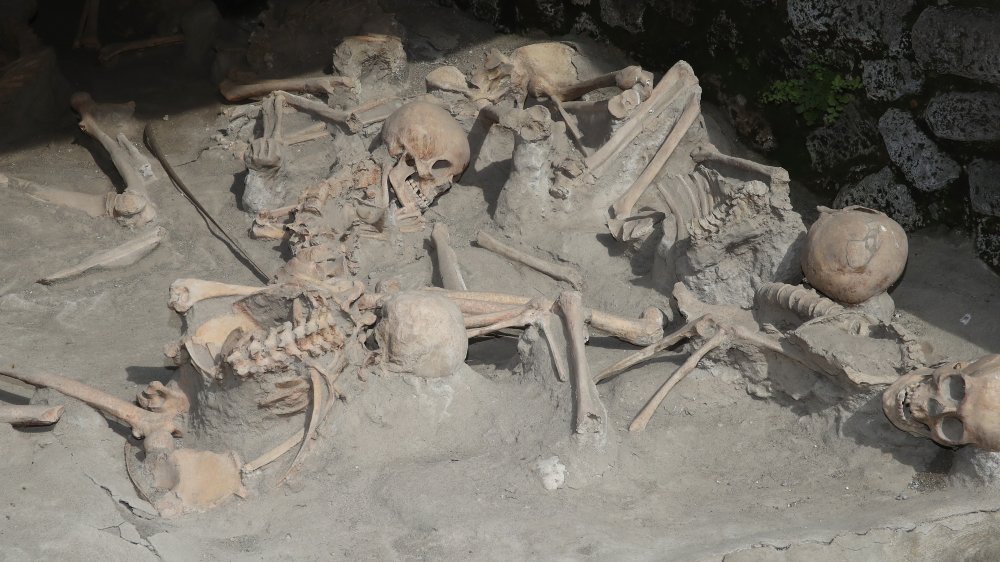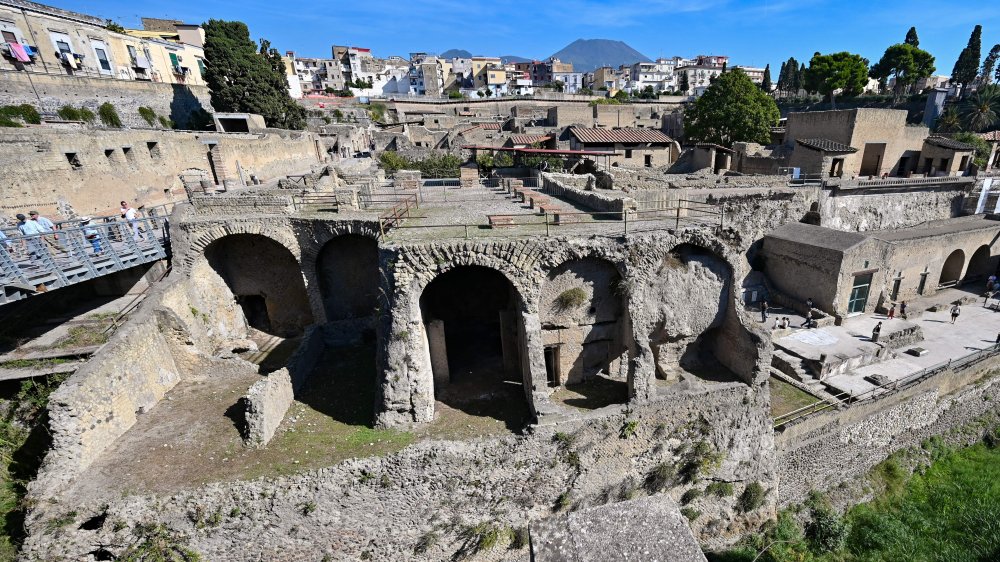Mt. Vesuvius Eruption 'Turned Man's Brain To Glass'
Here's the story so far for anyone who skipped a few episodes. Around 89 BC, the Roman empire took control of a couple of towns off the Gulf of Naples. The scenic views, hot springs, and temperate climate made them rad spots to jam out, but there was one problem: they were sitting, relative to most cities, basically on top of Mount Vesuvius, a classic, triangular, smoke-coming-out-the-top, Bond-villain lair-style volcano. "What if," authorities speculated, "this place is too awesome?" and then they went back to their symposiums and bacchanals and wondering what it would be like if people just watched shadow puppets all the time.
In the most foreseeable Michael Crichton plot twist possible, Vesuvius got down to the business of exploding in the year 79 AD, wiping out Herculaneum and Pompeii as it spilled an estimated 1.5 million tons of volcano bits into the air per second and released thermal energy equivalent to 100,000 of the nuclear bombs dropped on Hiroshima. The death toll was staggering, and the destruction catastrophic, but after nearly two thousand years, you're allowed to look at that kind of disaster with an air of fascination and not seem like the kind of guy whose crawl space the police are going to be excavating in a couple of months.
Like a glass jaw, but worse
The cities' uniquely immediate demise has made them a point of archaeological fascination since the 18th century. Researchers have long been staggered by the sheer amount of untapped weirdness laying under Mount Vesuvius' ash.
By way of example: a study published by the New England Journal of Medicine on January 23rd, 2020 states that a man's body, found in what's left of Herculaneum, had its brain turned into glass by the heat from the volcano's blast. And just like that, you have something new to talk about in therapy this week.
This over-the-top sci-fi horror show has been brought to you by a process called "heat-induced brain vitrification," and the lucky Roman so-and-so in question represents the first case of ancient human remains to have undergone the transformation on record. The body, found in the 1960s and believed to have been a man in his mid-20s who was killed instantly in the eruption, has been a noodle scratcher for decades on account of the black, glassy substance found inside of his skull. Now, archaeologists believe that the brittle mystery gunk used to be a lump of gray matter before "extreme radiant heat" vaporized all of the soft chunks, and a rapid cooling hardened them. It's a remarkable find for science, and perhaps an even bigger win for bead-making enthusiasts and guys who want to creep out everyone at the party by saying "Did you know your brain can turn into glass if you get burned fast enough?"

